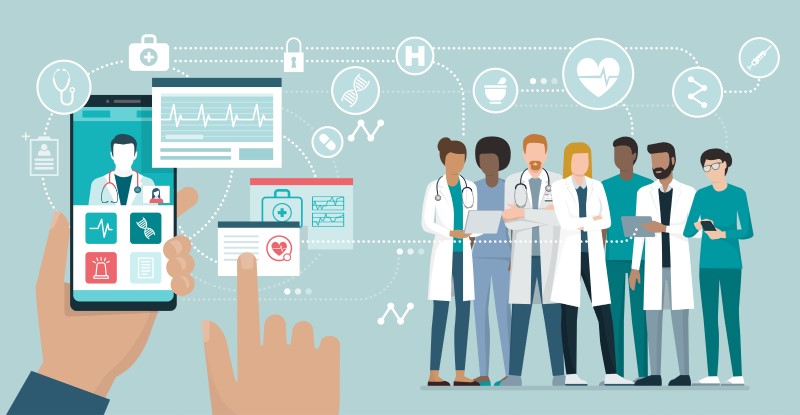
Technology will transform healthcare in 2020. As hospitals and clinics develop new tools to meet medical, patient and competitive demands, the pace of this transformation will increase.
Digital tools are being developed today to meet the increased demand for tomorrow’s healthcare. A recent study reveals that nearly every healthcare organization has a new technology initiative in the works for this year.
With so much as stake, organizations are under pressure to maximize their investment. Digital technology is only as effective as the personal communication that supports it.
In the successful organizations of 2020 and beyond, technology and healthcare communication will increasingly work hand-in-glove. In the five key areas of transformation below, these disciplines must align to reduce friction and maximize results.
1. Smart Tech Unleashes Critical Data Like Never Before
Healthcare in the home is driving the Internet of Things (IoT). It started in 2017 when the Apple Watch was used in a research program to identify irregular heart rhythms. Since then, the market for disease-monitoring and diagnosis tools has grown to be worth an expected $48.5 billion in 2024.
Smart technology is already being employed in bandages that monitor the wearer’s pulse and blood oxygen levels. Wearable developer Livongo Health, focused around diseases such as diabetes and high blood pressure, has been valued at $800 million.
It’s a technology change that will affect healthcare institutions and patient care. Monitoring, data collection and low-level diagnoses will take place in the home, outside traditional controlled environments. Effective training and ready access to information online will be essential for healthcare staff.
Establish an online repository of training and resource material, then publicize this regularly with updates to staff. Advise staff when new resources are available, collate news and patient stories in digital newsletters, and distribute webinars and training sessions via video alerts to guarantee 100% readership.
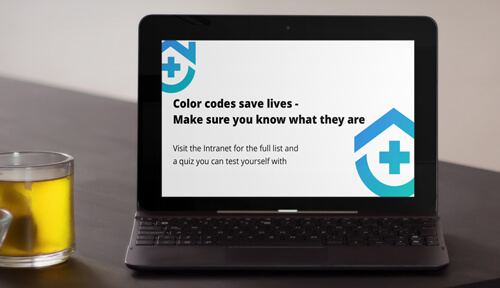
2. Mobile Becomes The Crucial Patient Touchpoint
The ubiquity of mobile in the consumer world is fast being matched in healthcare. Mobile health (or ‘mhealth’) is the healthcare and medical information supplied via mobile technology.
It’s a technology revolution for both patients and medical professionals. Healthcare apps are one of the fastest-growing markets in mobile app development. Patients now have access to approximately 100,000 health apps, with 300,000 paid apps downloaded every day. Medical apps are used by around 80% of physicians.
One implication of this trend for organizations is that their communications with staff must also be mobile-optimized. Remote office or ward-based staff rely on mobile communication to remain in the loop. But more than this, there’s also a desire for staff to receive communications in a more engaging and appealing way.
Healthcare communication must now seamlessly bridge all device types, whether mobile, traditional desktop or big-screen digital signage. Communication channels themselves need to be equally effective, particularly in high-priority situations such as emergencies or active shooter warnings. When lives can be at risk, alerts must reach everyone.
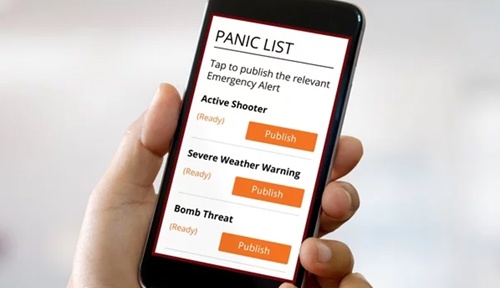
3. Cyber Criminals Make Healthcare Even More Vulnerable
Any implementation of new technology has the potential to introduce risk. In an increasingly digital world, cyber-attacks have become the most common risk to organizations. Whether for financial gain or simple mischief-making, the healthcare industry has become a prime target for hackers.
Data breaches at healthcare organizations have increased each year, with 277 in the last year compared with 271 previously.
In the wake of these attacks, the vulnerablilities of many hospitals and health systems have been exposed. When the 79 million customer records of health insurance giant Anthem were hacked in 2015, the company was forced to pay a $16 million settlement with the federal government.
Staff represent both the biggest source of danger and best line of defense for cyber security. Inappropriate online behavior can open the door for malicious attacks, while correct behavior is the best form of prevention.
Internal communication must inform staff of the issues and implications, but also engage them with solutions. Education sessions can raise risk awareness, while passive reminders on computer screensavers reinforce staff compliance with organizational policy.
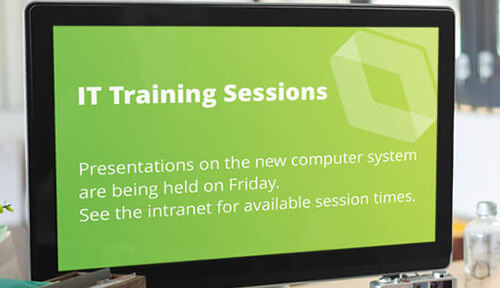
4. Retail Therapy Influences Healthcare Therapy
Technology will be a pillar of the consumer-centric care experience. As consumers have become accustomed to the service and quality afforded by technology in other areas of their lives, they’re increasingly expecting the same standards for their healthcare.
Almost 60% of healthcare consumers want their healthcare experiences to reflect those they have in the retail space. As younger people who are native technology users make up a larger proportion of patients, this is only likely to increase.
For organizations, the challenge is to embed the changes required across every aspect of the organization. Internal communication is one of the most visible and repeated instances of this.
Contemporary communication tools must be visual, engaging and interactive for staff to find them effective. Video messages or multimedia digital newsletters can replace cold corporate emails. A staff survey captures issues and suggestions from staff on the front line, as well as demonstrates employer empathy.
Employing such approaches can improve hospital communication between frontline staff and patients. After all, organizations will struggle to outwardly demonstrate the expected consumer-centric experiences if they are not living it internally.
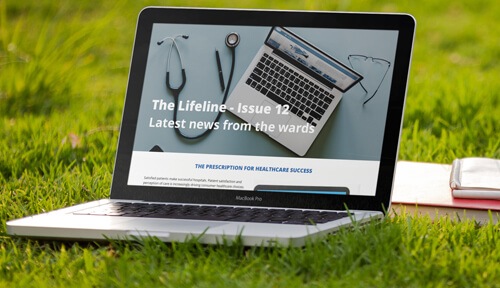
5. The Power Of WOM Puts Power With The Patients
The internet has become the mouthpiece of the patient. An opinion, whether positive or negative, can readily be shared across the world on a plethora of websites and forums. Patient reviews, already a cornerstone of HCAHPS scores, now have a wider audience than ever before.
An improved working environment has a measurable impact on patient ratings of their healthcare experience. In a study on healthcare work environments, organizations that improved their environments saw an 11% increase in favorable patient ratings. They also earned an 8% boost in patients that would recommend the hospital.
The effects are also felt internally. In the organizations where work environments deteriorated, 19% fewer nurses gave a favorable grade on patient safety and care.
Communications which support a positive culture are integral to foster a positive work environment and embed the behaviors that support patient satisfaction. Prominently celebrate the successes of individuals and teams. Put mechanisms in place to identify frustrations, such as through internal social forums.
In an industry with people at its core, ensure the people that work for you are valued and treated with the recognition they deserve.
There is much for the healthcare industry to be excited about in the technology transformation now underway. However, in an industry with people at the core, there’s a need for effective communication to engage staff and maximize the value of these innovations.


